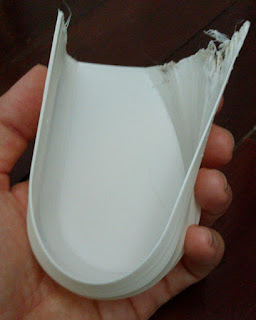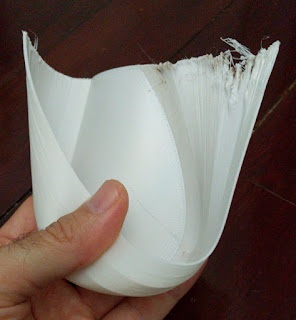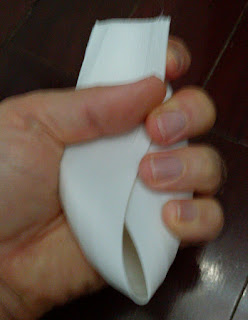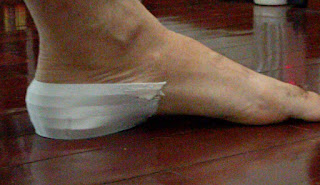3D printing is a very cool technology that has been around for a while, but only recently made it to consumer pricing levels. With it you can imagine something, design it in a CAD program (such as FreeCAD), and then print it so that you can hold it in your hand a few hours from when you first imagined it up.
But can you print clothing?
In my last post, I began playing with a flexible printing material that seems to make this possibility seem a little less crazy. From a clothing standpoint, maybe you don’t want to wear a soft plastic shirt or sock, but shoes seem like a first possibility. Shoes are particularly interesting for me since my feet are really, really big. Even in the USA, I couldn’t find shoes in my size at 99% of the shoe stores around. (I wear between size 15 and 16.) In Thailand, it isn’t even an option to custom order. (Except for the one time I bought hand made dress shoes. But I am a sneakers kinda guy.) Printing a shoe, even if it would only be for when I am in a pinch would be a nice option (like if the 2 or 3 pair of shoes I keep around all go bad at the same time and I am waiting for the 2-3 months it will take to get someone in the US to ship me a pair from Zappos).
This flexible filament is quite soft when printed thin (see below), and might have a strong fabric kind of texture if printed in a mesh, but still wouldn’t make a great sole. This is where some of the newer materials I haven’t gotten my hands on yet might come in. Things like “NinjaFlex” are supposed to provide a more rubbery material property. I am imagining a possible interweave of this flexible material and NinjaFlex to create a strong but shock absorbing sole. Let’s see when I can get my hands on a roll.
Last night I decided to whip up a heel just as a proof of concept.
It wasn’t an easy piece to model. FreeCAD seems more designed for machine parts and regular objects. So the problem on the near upper right was probably because I let the thickness get too thin or else too little support for that part. That’s okay. This is what proof of concepts are for. It shouldn’t be too difficult to either add more support, or adjust some thickness in that spot.
And in general, I am very very happy with this experiment. The piece is roughly 1mm thick and 80mm wide, 120mm long, and 50mm high. At this size, the material is very bendy. It is more flexible than a piece of thin cardboard. Here are some photos of it bending:
 |
| No bending |
 |
| Bend up the bottom |
 |
| Bend it over itself |
And it springs back just fine.
The part I printed last time was just a simple and very small 3cm cup. At 2mm thick walls, it was fairly stiff for its size. But this print shows that a larger thinner piece is much more flexible.
Even without the rubbery sole, I think this material feels like it could work to make an idea I had… I need a slipper that I can use to walk inside the pond and protect my feet from any rocks or nails that might have fallen in. Finish off the shoe, add a bit of tread to the bottom, and this ought to just do the trick.
